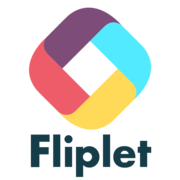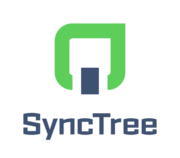
Best No-Code Development Platforms 2025
What are No-Code Development Platforms? No-code development platforms allow users to create applications without using traditional text-based programming languages. These tools offer a wide range of complexity in the applications they are able to create. Some no-code development platforms are designed for simple process automation, while others can be used to develop and deploy complex applications with custom user interfaces. No-code development platforms commonly use a drag-and-drop ...
We’ve collected videos, features, and capabilities below. Take me there.
All Products
Learn More about No-Code Development Software
What are No-Code Development Platforms?
No-code development platforms allow users to create applications without using traditional text-based programming languages. These tools offer a wide range of complexity in the applications they are able to create. Some no-code development platforms are designed for simple process automation, while others can be used to develop and deploy complex applications with custom user interfaces.
No-code development platforms commonly use a drag-and-drop environment with flowchart-style connections between each component. This helps users with limited coding knowledge visualize data flow and iterate on designs.
The deployment methods for applications developed on no-code development platforms varies. Some platforms run their applications within the ecosystem of the platform itself. This saves users from needing to configure runtime environments and deployment options. Other platforms may include functionality for deploying applications to mobile app stores or dedicated web pages. Many no-code development platforms include DevOps features for application management, including testing and version control.
Use Cases
No-code development platforms generally fall into one of two broad categories based on their intended use case: external applications and internal applications.
Externally-focused platforms generally aim to serve users who want to publish software without learning to code or hiring developers.They often feature robust UI design tools and starting templates for “clones” of popular apps. These platforms help developers and organizations create and deploy no-code software to the public.
Internally-focused platforms are designed for internal applications, workflow automation, and operational efficiency. These no-code development platforms commonly integrate with third-party collaboration, project management, and development tools. Some products also include these features natively. Internal application developers, project managers, and IT staff often use these platforms, although they are designed to be usable by any employee with an idea for an application.
Internally-focused no-code development platforms commonly overlap with business process management (BPM) tools. Both types of software include features to diagram and execute workflows. However, their goals are different. BPM tools are targeted specifically towards enterprises that want to streamline and codify internal operations. No-code development platforms are more generalized, providing all-purpose software development capabilities to every user within an organization.
No-Code vs. Low-Code
As the name suggests, no-code development platforms are closely related to low-code development platforms. The primary difference between the two is the degree of coding knowledge users need to develop applications on the software. A purely no-code development platform is accessible to users of all skill levels, with no coding knowledge required for any of its features.
Low-code development platforms may include no-code design tools without marketing themselves as no-code development platforms. For example, these products often allow advanced users to extend and customize components with small amounts of code. These custom modules can then be re-used by users with no coding experience.
Alternatively, some low-code development platforms are fully no-code in some areas and low-code in others. When evaluating platforms marketed as either no-code or low-code, examine the feature set carefully to see how much coding knowledge is truly needed to use the platform fully.
No-Code Development Platform Features
Most no-code development platform products have the following features:
- Drag-and-drop design and development
- Point-and-click design and development
- Visual modeling
- Reusable custom components
- App deployment
- Version control
- UI design
- Templates for common applications
- Integrations with common data sources
- Project/task management
- User management and team roles
- Security
No-Code Development Platforms Comparison
Here are the important factors to consider when evaluating different no-code development platforms:
Application type: Some no-code development platforms are tightly focused on creating specific applications. Common application types include chatbots, forms, and surveys. These platforms can greatly simplify the development of their targeted application type. However, they are much less useful for creating more generalized applications.
Business goal: No-code development platforms can differ in the problem they aim to solve. A platform focused on internal process automation won’t be much use if you want to bring a consumer app to market. Alternatively, if you want to help employees automate tedious tasks, you might not need app hosting or version management tools.
Users: The right no-code development platform for a dedicated app development team likely includes in-depth configuration options and DevOps tools. For everyday users across different teams, project management and collaboration features are likely more important than in-depth developer tools.
Pricing model: While standard annual or monthly-per-user plans are common, some products charge per application. Platforms focused on forms or surveys may also charge per responder.
Start a comparison of No-Code Development Platforms here
Pricing Information
Pricing and pricing models for no-code development platforms are not standardized, but share some commonalities. Free trials are common among many vendors, as are tiered pricing structures. Higher-tier plans often include features useful for larger teams, such as unlimited data storage, collaboration tools, or user access control.
Some no-code development platforms are priced per user per month. These plans generally range from $5 to $25 per user per month for low- to mid-level tiers. For enterprise tiers, these vendors typically offer a custom quote.
Other platforms are priced at a flat rate per month. These prices can vary widely depending on the tier, ranging from under $100 to $2,000 or more per month.
Monthly per-app pricing is also common, ranging from around $5 to $60 per app per month. Some vendors may also combine app, user, and monthly pricing, with higher tiers removing per-user or per-app restrictions.
























